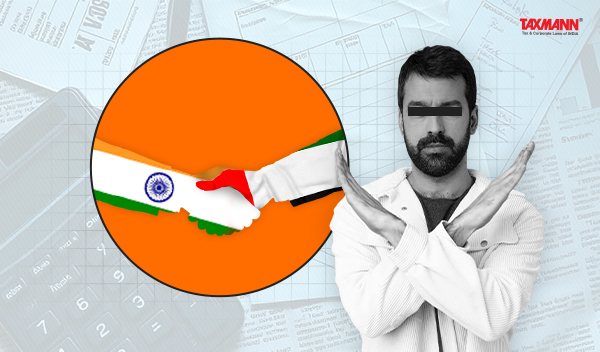Right to Tax in UAE Sufficient to Claim Benefit of India-UAE DTAA; No Need to Prove Actual Payment of Tax | ITAT
- Blog|News|Income Tax|
- 2 Min Read
- By Taxmann
- |
- Last Updated on 23 November, 2024
Case Details: Saket Kanoi vs. DCIT - [2024] 168 taxmann.com 418 (Delhi-Trib.)
Judiciary and Counsel Details
- Dr. B.R.R. Kumar, Accountant Member & Yogesh Kumar US, Judicial Member
-
Sunny Jain & Rajesh Sanghwi, CAs for the Appellant.
-
Vizay B. Vasanta, CIT-DR for the Respondent.
Facts of the Case
The assessee, a resident of the UAE, received capital gains in India on the sale of mutual funds. He did not offer it to tax, relying upon Article 13(5) of India-UAE DTAA. The Assessing Officer (AO) held that it was not a case of double taxation as income had not suffered tax anywhere in the world. Accordingly, he denied the assessee benefit of India-UAE DTAA.
On appeal, the CIT(A) reversed the AO’s order and granted the benefit of India-UAE DTAA to the assessee. The matter reached the Delhi Tribunal.
ITAT Held
The Tribunal held that in the case of ITO v. Shri Ramesh Kumar Goenka in [2010] 39 SOT 132 (Mum.), it was held that the expression ‘liable to tax’ in the contracting state as used in article 4(1) of Indo-UAE-DTAA does not necessarily imply that the person should actually be liable to tax in that contracting state. It was enough if the other contracting state had the right to tax such a person, whether or not such a right was exercised.
In the instant case, since the assessee was a resident of the UAE, it was only the UAE that had the right to tax capital gain and not India. Article 13 of the agreement for the avoidance of double taxation between India and UAE provided an exemption from capital gains tax in India to residents of the UAE. Thus, the benefit of the DTAA was to be given to the assessee.
List of Cases Reviewed
- Addl. DIT v. Frate Line, Dubai in IT A No. 2439/Mum/2008 (Para 8)
- ITO v. Shri Ramesh Kumar Goenka in ITA No. 3562/Mum/2009 (Para 9)
- DCIT v. Shri K. E. Faizal in ITA No. 423/Coch/2018 (Para 10) Followed.
List of Cases Referred to
- Addl. DIT v. Frate Line, Dubai ITA No. 2439/Mum/2008 (para 8)
- ITO v. Shri Ramesh Kumar Goenka ITA No. 3562/Mum/2009 (para 9)
- DCIT v. Shri K. E. Faizal ITA No. 423/Coch/2018 (para 10)
- ADIT v. Green Emirate Shipping and Travels 286 ITR 60 (para 11).
Disclaimer: The content/information published on the website is only for general information of the user and shall not be construed as legal advice. While the Taxmann has exercised reasonable efforts to ensure the veracity of information/content published, Taxmann shall be under no liability in any manner whatsoever for incorrect information, if any.

Taxmann Publications has a dedicated in-house Research & Editorial Team. This team consists of a team of Chartered Accountants, Company Secretaries, and Lawyers. This team works under the guidance and supervision of editor-in-chief Mr Rakesh Bhargava.
The Research and Editorial Team is responsible for developing reliable and accurate content for the readers. The team follows the six-sigma approach to achieve the benchmark of zero error in its publications and research platforms. The team ensures that the following publication guidelines are thoroughly followed while developing the content:
- The statutory material is obtained only from the authorized and reliable sources
- All the latest developments in the judicial and legislative fields are covered
- Prepare the analytical write-ups on current, controversial, and important issues to help the readers to understand the concept and its implications
- Every content published by Taxmann is complete, accurate and lucid
- All evidence-based statements are supported with proper reference to Section, Circular No., Notification No. or citations
- The golden rules of grammar, style and consistency are thoroughly followed
- Font and size that’s easy to read and remain consistent across all imprint and digital publications are applied








 CA | CS | CMA
CA | CS | CMA


